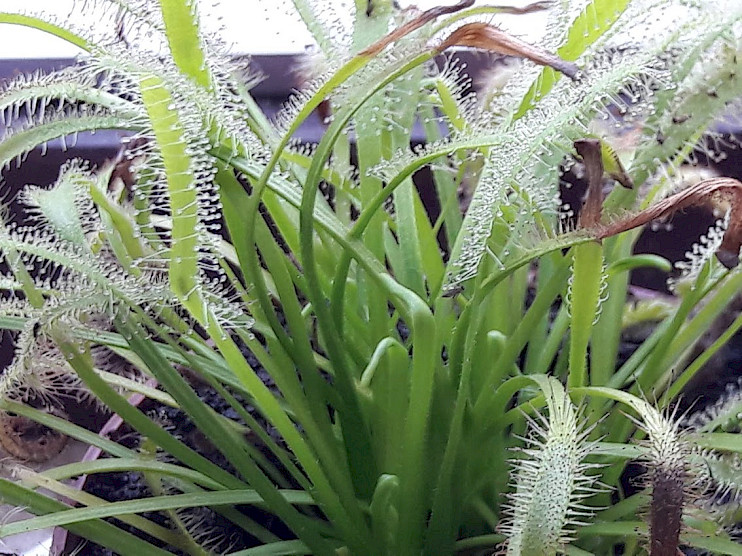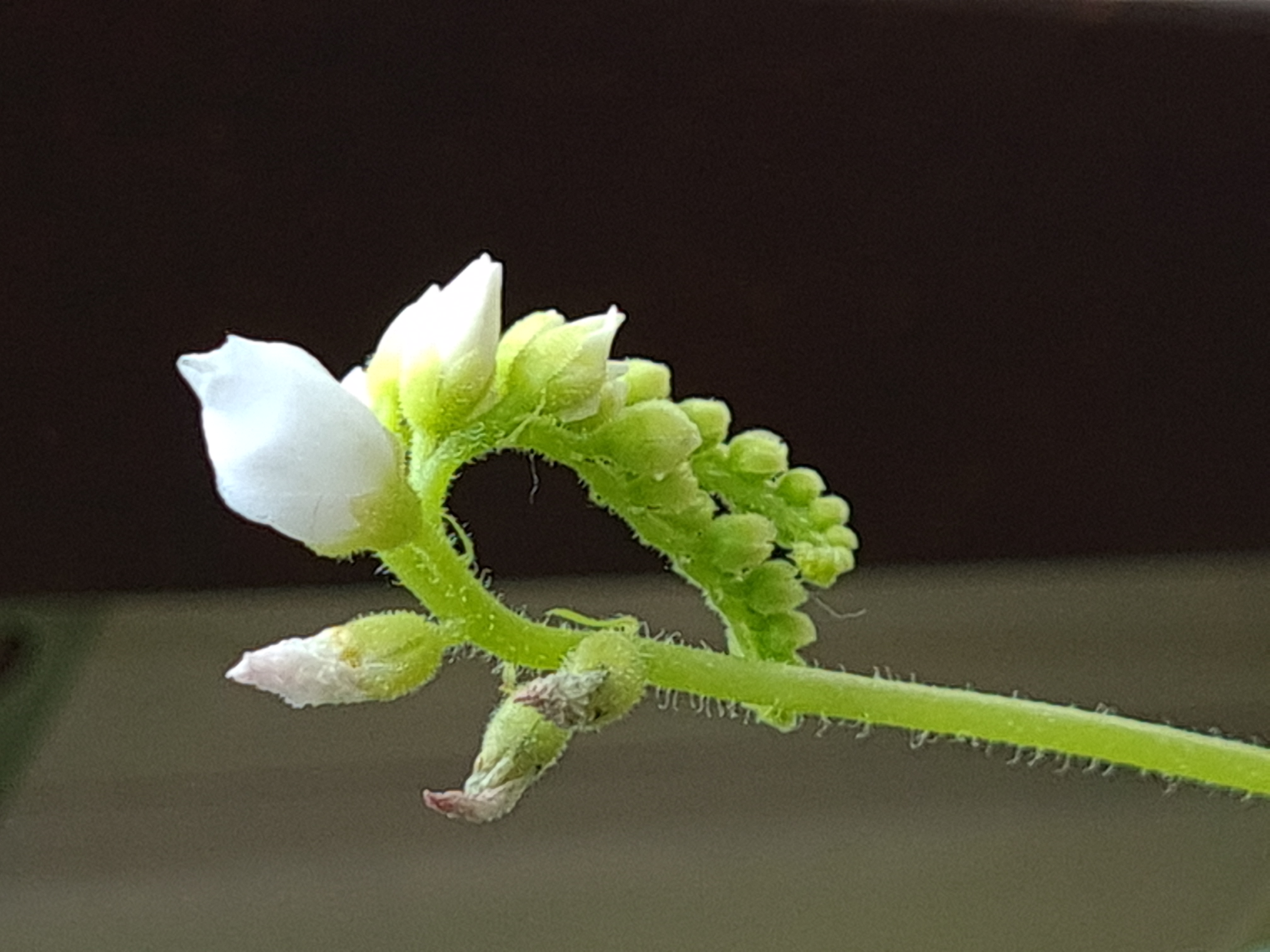

Drosera capensis var. alba
General
Drosera capensis var. alba—commonly known as the "white form Cape sundew"—is a captivating carnivorous plant native to South Africa's Cape region. This variety stands out for its elegant green leaves and pristine white flowers, but what truly fascinates is its sticky, dew-covered “tentacles” that trap unwary insects. This is one of the easiest sundews to grow, making it a favorite starting point for both beginner and experienced carnivorous plant enthusiasts.
Physical Characteristics
Unlike the typical Cape sundew, which displays bright pink or red hues, the alba form features all-green foliage and nearly translucent glands, giving it a delicate, ethereal appearance. The upright, spoon-shaped leaves can reach up to 15 cm (6 in) long, radiating gracefully from the center of the plant. In bloom, slender stalks rise above the foliage, each producing several simple, pure white blossoms.
Lifestyle
This sundew is a master of passive insect capture, relying on its sticky mucilage to ensnare small prey like gnats, fruit flies, and mosquitoes. Once an insect lands on the glistening tentacles, the leaf curls inward, maximizing digestive contact and slowly absorbing nutrients. This adaptation compensates for the plant’s natural habitat: soils that are low in essential minerals.
Habitat and Protection
In the wild, alba is found in densely vegetated wetlands, bogs, and fynbos ecosystems. It thrives in peaty, acidic soils that remain consistently moist. Though not threatened in its native range, local habitat degradation can pose risks. In cultivation, protection from extreme temperatures and hard water is key to preserving its delicate beauty.
Cultivation
This variety is highly adaptable and forgiving—perfect for windowsills, terrariums, or greenhouses. It can even be grown outdoors in mild, frost-free climates. Given the right conditions, it grows vigorously and often self-seeds, spreading to fill available space.
Special Features
- Pure white flowers (unlike the typical purple-pink)
- All-green leaves, with minimal or no red pigmentation
- High tolerance for cultivation mistakes
- Readily self-pollinates and produces viable seeds
Care
Light
Bright, indirect sunlight is preferred, though it can tolerate several hours of morning or late afternoon direct sun. Too little light hinders its dewy traps and vigor.
Temperature
Optimal temperatures are between 18–28°C (65–82°F). It does well in typical indoor conditions but should be shielded from cold drafts and excessive heat spikes.
Water
Use only distilled, rain, or reverse osmosis water. Keep the soil moist at all times by setting the pot in a shallow tray of water. Allow the tray to dry out for a day occasionally to prevent root rot.
Soil
A classic carnivorous plant mixture of sphagnum peat moss and perlite (about 2:1 ratio) works best. Avoid standard potting soil, compost, or fertilizer-rich substrates.
Nutrition
It gains most nutrients from captured prey; do not fertilize. If insects are scarce indoors, an occasional small feeding of rehydrated bloodworms or fish food flakes will suffice.
Humidity
Moderate to high humidity (50–80%) supports healthy mucilage production, but alba can adapt to average indoor conditions.
Dormancy
Unlike some temperate sundews, this variety does not require a cold dormancy period and can grow year-round.
Common Problems
Leaves discolor or wilt
Cause: Insufficient sunlight or root rot due to soggy conditions.
Solution: Increase light levels and ensure the water tray occasionally dries out to aerate roots.
Brown or crispy leaf tips
Cause: Hard tap water or over-fertilization.
Solution: Switch to pure water and never fertilize directly.
No dew on tentacles
Cause: Low humidity or overly dry air.
Solution: Raise humidity by placing the pot on a tray of pebbles and water or grow in a terrarium setting.
Leaves contort or growth stalls
Cause: Pest infestation (typically aphids or fungus gnats).
Solution: Inspect and remove pests manually, or use a gentle insecticidal soap safe for carnivorous plants.
